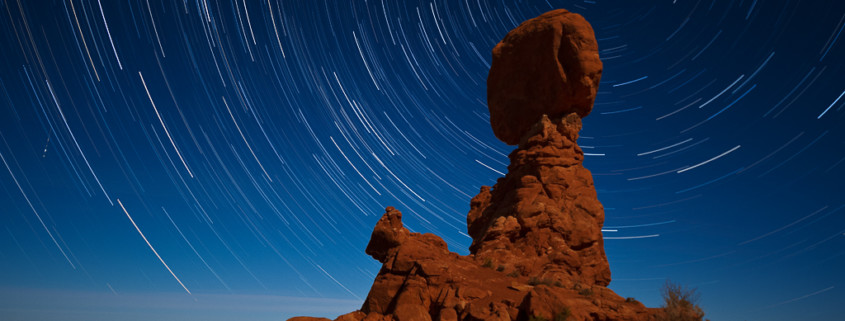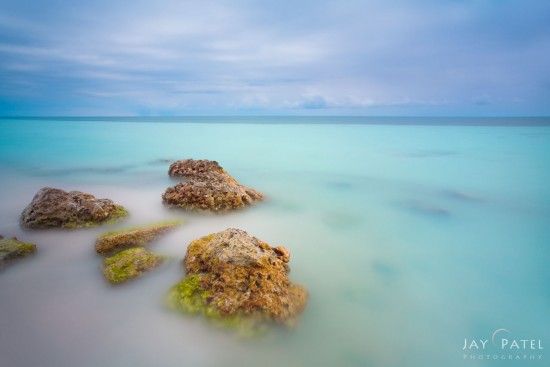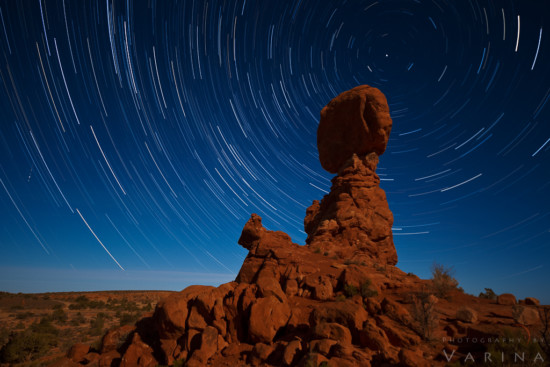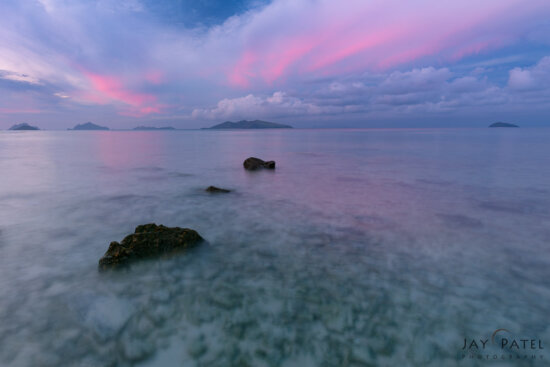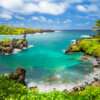When and How to use Long Exposure Photography
One of the biggest challenges we face as nature photographers is how to tell the story of a particular location. We work to create an image that will let our audience know what it felt like to stand before the scene and take it all in. We see the motion of the water, smell the damp earth, and hear the leaves rustle in the breeze. Wouldn’t it be lovely if our nature photography could communicate at least some of what we experienced?
While I haven’t figured out “smell-o-photo” just yet, I have enjoyed using long exposure photography with slow shutter speed to tell the story of motion in my images. This technique helps create a sense of atmosphere and movement, making viewers feel as though they are standing right there with you.
What is Long Exposure Photography?
One of the three components of the exposure triangle is shutter speed, which is essentially a measure of time — the length of time the camera’s shutter is open, allowing light to strike the sensor. When you use a longer than normal shutter speed to blur moving elements in a scene, the technique is referred to as long exposure photography.
This approach is one of the most creative slow shutter speed photography techniques available to nature photographers. It’s particularly effective when you want to combine dynamic, moving elements with static ones in a single frame. My personal favorite use of this method is capturing the soft, flowing motion of water.
When to Use Long Exposure Photography?
I turn to slow shutter speed landscape photography whenever I’m photographing something in motion and want to convey that sense of movement rather than freezing it. For instance, I’ll use a fast shutter speed to capture a dog leaping for a frisbee. But when photographing moving water, drifting clouds, or star trails, I reach for slower shutter speeds to enhance the storytelling power of my images.
By keeping the shutter open for a longer duration, moving elements blur naturally while stationary parts remain sharp. This juxtaposition creates a sense of balance and drama in the composition.
Some popular examples include:
- Long exposure waterfall photography to show silky, flowing water.
- Seascape photography with slow shutter speeds to smooth out crashing waves.
- Long exposure night photography to capture star trails or car light trails.
- Creative in-camera motion photography to create abstract effects.
Best Practices for Long Exposure Photography
Getting beautiful results with long exposure photography requires planning, patience, and attention to detail. Here are some essential best practices for slow shutter speed photography:
- Use a sturdy tripod
Long exposures often last several seconds to minutes. Any shake will ruin your image. A solid tripod ensures sharp static elements. - Incorporate a neutral density (ND) filter
ND filters reduce the amount of light entering the camera, allowing for slower shutter speeds even in bright daylight. For example, a 10-stop ND filter can turn a fraction-of-a-second exposure into a 30-second one, perfect for smoothing out water or clouds. - Set your ISO and aperture strategically
Use the lowest ISO (e.g., ISO 100) to minimize noise, and stop down your aperture (e.g., f/11 or f/16) to lengthen shutter time without overexposing. - Check for movement in static subjects
Be mindful of trees, grasses, or other elements that may sway in the wind. A long exposure will blur them unintentionally. Choose calm conditions or adjust composition. - Experiment with different shutter speeds
Don’t settle for just one shot. Capture a series with varying shutter speeds to see how different levels of blur affect the mood. - Use a remote shutter release or timer
To avoid camera shake, trigger your shot remotely or set a 2-second timer delay. - Shoot in RAW
RAW files preserve more detail and dynamic range, which is crucial for recovering highlights or shadows when editing long exposure shots.
Creative Uses of Slow Shutter Speed in Nature Photography
Long exposure photography isn’t limited to silky water effects. Try experimenting with these creative shutter speed photography ideas:
- Reflected light on water – capture dreamlike reflections at dawn or dusk.
- Night skies – use long exposures to capture the rotation of the earth through star trails.
- In-camera motion blur – intentionally move your camera during exposure to create painterly images of forests, fields, or flowers.
These methods allow you to go beyond documentation and step into the realm of artistic interpretation. Here are some examples:
1. Bahia Honda, Florida
On first glance, the rocks on Bahia Honda Beach, Florida, don’t inspire much. In ordinary daylight, captured at 1.6s, f/14, ISO 100, the water looks flat and unremarkable. The scene feels dull and lifeless.
But with a 53-second exposure at f/16, ISO 100, and a 8-stop ND filter, the water transforms into a silky canvas of motion, reflecting subtle colors from the sky. It also erased the dark seaweeds that were in motion in between the rocks. The rocks suddenly stand as strong, stoic anchors in the composition.
What inspires me about this image is not the subject itself, but the idea that creativity lies in perception. By slowing the shutter, I turned something ordinary into something evocative. This moment reinforced for me that long exposure photography can make overlooked places worth capturing.
2. Elakala Falls in the Blackwater Falls State Park
Standing at the base of Elakala Falls in Blackwater Falls State on an overcast day gave me perfect conditions for long exposure waterfall photography. With soft light and no wind, the trees remained perfectly still, allowing me to focus on the motion of water tumbling over the rocks.
I experimented with shutter speeds between 1/3 second and 4 seconds, adjusting aperture to f/11–f/16 and ISO locked at 100. The difference between 1/3s and 4s was striking: at 1/3s, you see texture in the water; at 4s, the flow becomes dreamlike and ethereal with streaks of fast moving bubbles in the foreground.
The key here was experimentation. I didn’t settle for one frame but instead explored multiple exposures to decide later which captured the story I wanted to tell. It reminded me that part of creative slow shutter speed photography is leaving room for experimentation.
3. Star Trails in Arches National Park
One of the most rewarding uses of long exposure is at night. In Arches National Park, Varina wanted to capture the rotation of the Earth through star trails.
She set my camera on a sturdy tripod, framed the arch as my foreground anchor, and programmed a series of 30-second exposures at ISO 1600, f/2.8 using an intervalometer. By stacking over 100 exposures in post-processing, she created trails that stretched gracefully across the sky.
What inspires us here is the feeling of scale — long exposure night photography reminds us how small we are beneath the vastness of the universe. Technically, it also demonstrates the importance of understanding when a single long exposure (which may cause sensor noise and overexposure of stars) is less effective than stacking shorter ones.
4. Evening in Fiji
At North Beach on Mana Island, light was fading fast. The sea churned, the sky dimmed, and the rocks in the foreground stood in still defiance. With the naked eye, there was little visible detail. Yet, trusting the process, I set my camera to f/9, ISO 100, 3.2s exposure, using a sturdy tripod and with a remote release.
The resulting frame stunned me: the sea appeared as a misty blanket, the sky revealed deep blues and magenta streaks , and the foreground rocks emerged with mysterious clarity.
This image is inspiring because it was an act of faith. Long exposure photography sometimes rewards curiosity with surprises the human eye can’t see — hidden beauty revealed only through patience, technique, and a willingness to experiment.
Conclusion
Long exposure photography is one of the most powerful tools in a nature photographer’s creative kit. By learning how to master slow shutter speed techniques and combining them with careful observation of the scene, you can transform ordinary landscapes into extraordinary works of art.
The next time you’re out in the field, experiment with longer shutter speeds. Whether you’re photographing a waterfall, ocean waves, or the night sky, you’ll discover new ways to tell your story and connect with your audience.

